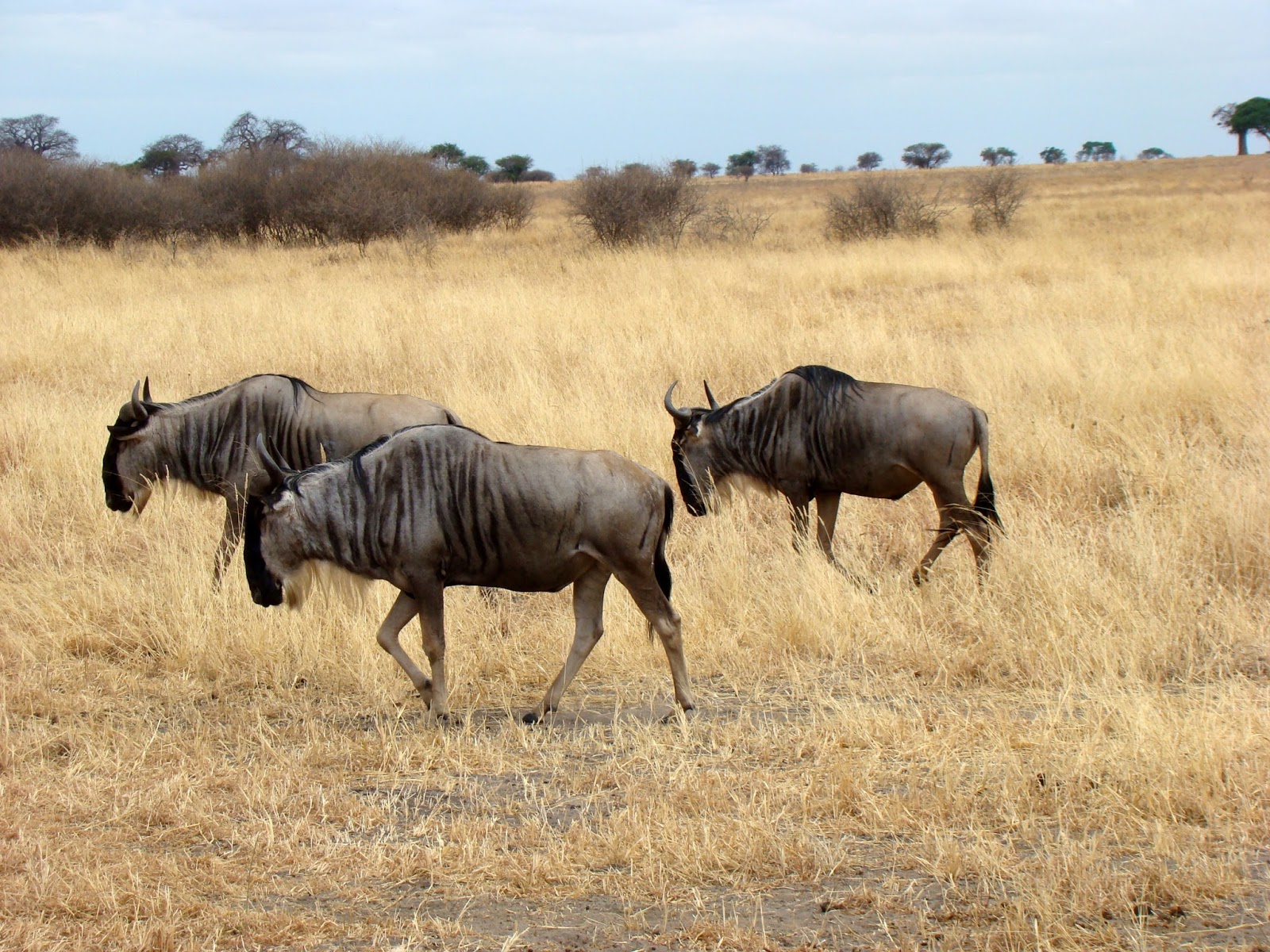Botswana's Blue Wildebeest
We
saw relatively small numbers of wildebeest, which was surprising, given the
huge numbers that populate the East African savannahs. But, wildebeest in Botswana are a different species from those in East Africa and have very different habits.
 |
| Blue-bearded wildebeest of Botswana |
 |
| White-bearded wildebeest of Tanzania |
Male
wildebeest here are territorial and spend most of their time protecting their
territory, so are often alone. They try
to collect a small herd of females during the mating season for breeding, but
if the females wander outside a particular male's territory, that male will let
them go, preferring to defend his domain from interlopers.
The
Botswana wildebeest lacks the silvery beard so distinctive to the East African
wildebeest. Their beards are black
(blue-bearded), matched by black, spiky manes.
They are built the same, though, just as ungainly as their East African
cousins. They are not commonly found with the Southern Zebra.
Impala
There
are lots of beautiful, graceful, finely boned impala in Botswana. Right now (fall--May), they are mostly
organized into bachelor herds of males awaiting their chance to defeat a
breeding male with a harem and herds of females with one dominant male.
A
dominant male with a flock of females spends his time trying to keep all the
females together to be available for mating when they come into heat. He is so busy herding, protecting and mating
with the females that he doesn't have enough time to eat all he needs to stay
strong and dominant. Consequently, our guides told
us, a male will only keep his harem for 8 to 10 days before exhaustion makes
him vulnerable to another eager male who drives him out and takes over the
harem.
 |
| Male impala with harem |
We
watched 2 male impalas fighting. They
were brutal, slamming into one another with their horns thumping loudly until
finally, after perhaps 10 minutes, one of them backed up and up and up and
finally turned tail, leaving the victor to corral the females for himself.
The
Namibian Oryx is beautifully adapted to the harsh desert environment. They, and other antelope living in the
desert, do not need to drink more than once or twice a year, when they will
slurp down 7 to 8 liters of water at once.
They get water from the moisture in the leaves of the plants they eat
and from a gourd that puffs up with water whenever there is rain or heavy
dew. The Oryx drink the water from
inside the gourd to tide them over the long dry spells. During the hot parts of the day, they retire
to the shade of a bush or acacia tree to slow down their breathing and their
need for moisture. Their movements are
slow even when they’re out grazing in the evening. Since there are few predators, they rarely
have to run for their lives.



No comments:
Post a Comment